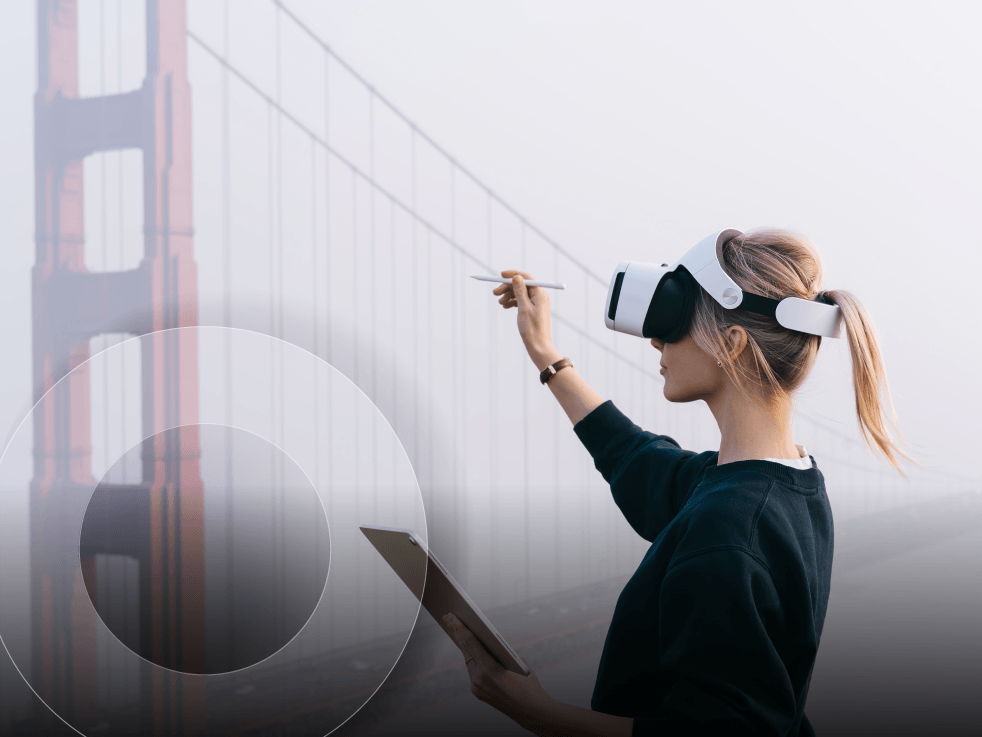Can the office exist in an immersive workspace?:
While the metaverse may be a stretch for some consumers, the enterprise has long been testing extended reality

Even before remote work became the new norm, large organizations with multiple offices have had employees stationed all around the world. Trying to bring groups of people together to a centralized location for team-building workshops, conferences, or trainings can be expensive, but extended reality (XR) has created the potential for a global, collaborative space.
XR is an umbrella term that encompasses augmented reality (AR), virtual reality (VR), and mixed reality (MR). Though significant barriers to entry remain, the building blocks for this new office space are already here.
What is the metaverse?
Simply put, the metaverse is a fully realized digital environment. A lot of the technologies that extend beyond our physical space, mostly those dealing with AR and MR, already exist on smartphone and tablet devices. Similarly, head-mounted VR displays can be used to enhance surroundings. But how does this work in practice?
Virtual reality
VR allows for immersive experiences that lend themselves to self-service training across industries. For example:
- Doctors can perfect their skills by repeatedly practicing a procedure prior to operating on a human life.
- Mechanics can learn how to service a machine turbine by manipulating a digital twin without ever going on site.
- Managers can be trained on soft skills like navigating tough conversations and spotting bias in the workplace.
Augmented reality
Popular AR use cases feature “see what I see” technology that transcends space and time. For global organizations, this has already become commonplace. Instead of a multi-day, international business trip, an expert in Asia can remote into a video call and train another resource in the United Kingdom without leaving home.
Mixed reality
Combination technologies like MR blur the lines and stretch the imagination. A user can point their device at a physical location and watch AR technology overlay details that aren’t physically present. For instance, a retail customer can scan a product’s barcode and see its price tag virtually appear on the shelf.
SHI is constantly growing our skill set and expanding our knowledge base to help our customers plan far into the future.
The dream vs. the reality
The IT and enterprise sector will discover use cases for extended reality for years to come as the technology matures. The potential is not limited to teaching and learning hard skills. It also includes soft, HR-related skills like morale boosting, bias training, talent acquisition, and onboarding. Let’s examine how XR can impact these areas.
Employee morale
After two years of remote work, employees are continuing to struggle with loneliness, which has increased interest in collaborative technology. However, VR avatars can’t yet replicate the benefits of face-to-face meetings, like energy, body language, or quick consensus. The psychology of direct interaction cannot be overlooked – even if the cartoon mini-mes are fun!
Bias training
To combat against conscious, unconscious, and hidden biases, managers can use an artificial intelligence avatar in VR to practice interactions. This technology can identify signals they may be subconsciously projecting. For instance, an avatar can inform a manager that what they intended to say to an employee could be hurtful. The supervisor is then able to rephrase their approach before having the real-life conversation.
Attracting talent/onboarding
An organization that offers experiences in extended reality might gain an edge when prospective, high-value employees are choosing between one company versus another. Because, let’s face it, cutting edge technology is just cool.
But despite all the amazing things organizations can achieve in the metaverse, the truth is that the technology isn’t far along enough in its development to be an effective tool yet. The three most significant hurdles are cost, security, and privacy.
Barriers to entry
While organizations benefit from employing advanced technology, the costs and risks could outweigh the rewards right now. Of the extended reality technologies, AR offers the most security – but it’s also the priciest. The Oculus headset is more affordable than other options, but the device must be tied to a Facebook account, which allows Facebook to collect end-user data.
In addition to the security risks introduced when involving a third party, internal sharing from partner to partner still causes issues. Consider a pharmaceutical organization that stores their patented drug information in a head-mounted device. Sharing this equipment may result in sensitive data inadvertently being exchanged between users. While the technology is starting to incorporate master data management (MDM) to remove sensitive data, most customers are unaware of these security concerns.
It’s easy to become blind to data risks when presented with fantastical, futuristic tools. But organizations that fail to grapple with the breadth of information they’ve stored in a public cloud may soon regret their inability to access and remove this data. XR technology remains a young, unproven commodity. Time will tell how the enterprise sector will deal with these privacy risks.
Spark change with SHI
SHI has the capability to help organizations select the technology required to make XR a realistic, immersive, and secure experience. We also offer lifecycle management of devices and licenses and can leverage our partner relationships for securing, managing, and deploying metaverse technologies.
Ready to learn more about the possibilities that XR can open up for your organization?
Sign up for one of our ABCs of Immersive Technologies or Microsoft HoloLens Essentials workshops and make sure you’re prepared for the exciting opportunities ahead.




